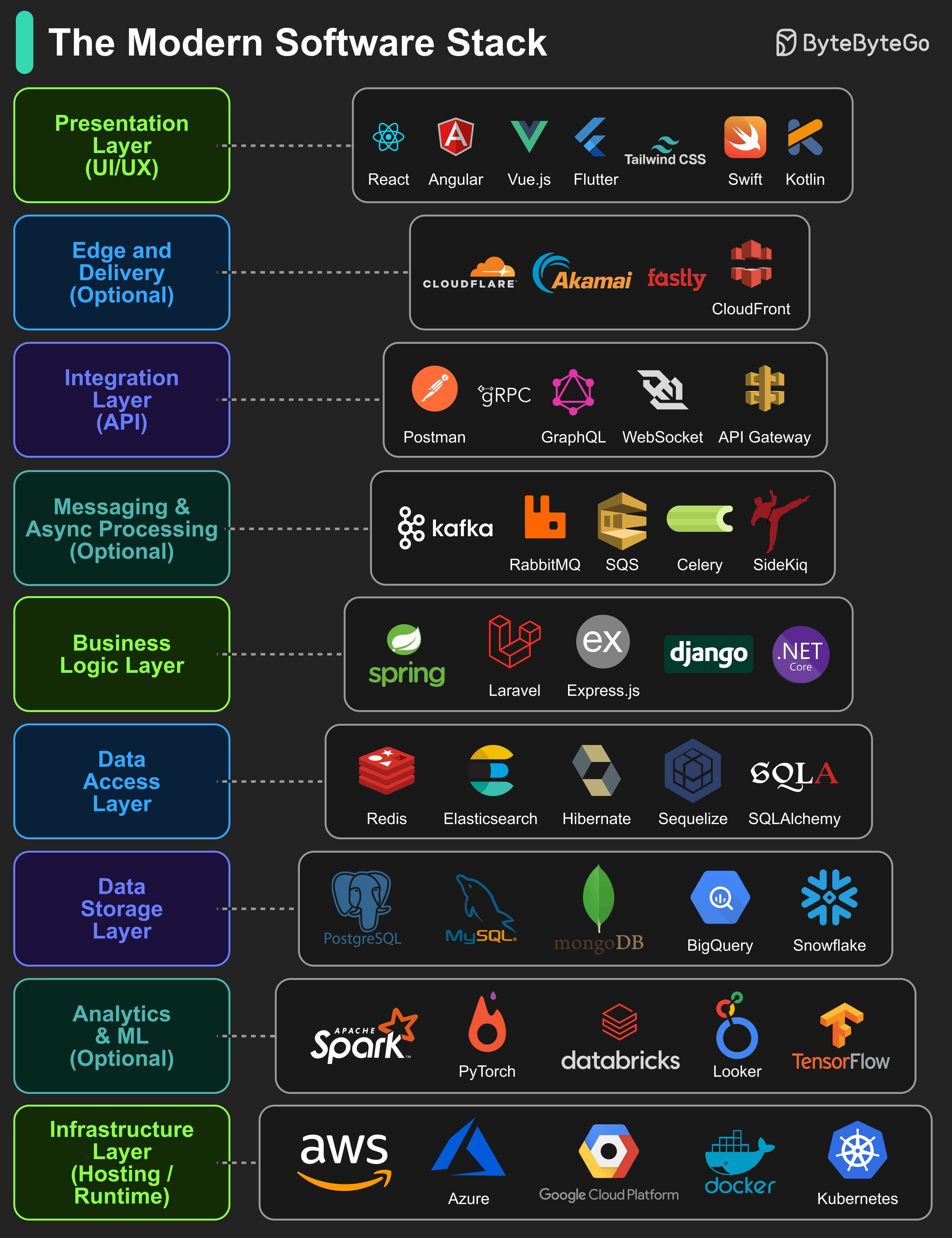Modern Software Stack

In today’s world, building software means working across multiple layers, each with its own role, tools, and technologies. Here are 9 layers that make up most modern applications:
Presentation Layer (UI/UX): Handles how users interact with the application, focusing on visuals, layout, and usability.
Edge and Delivery (Optional): Brings content closer to users through global delivery networks, reducing latency and improving performance.
Integration Layer (API): Defines how different parts of the system communicate, enabling interoperability between components.
Messaging & Async Processing (Optional): Processes tasks and events in the background to improve scalability and responsiveness.
Business Logic Layer: Implements the core rules, workflows, and decision-making processes of the application.
Data Access Layer: Acts as a bridge between application logic and stored data, ensuring secure and efficient retrieval or updates.
Data Storage Layer: Stores, organizes, and manages the application’s structured and unstructured data.
Analytics & ML (Optional): Analyzes data to generate insights, predictions, and intelligent features.
Infrastructure Layer (Hosting / Runtime): Provides the computing environment and resources for deploying, running, and scaling the application.